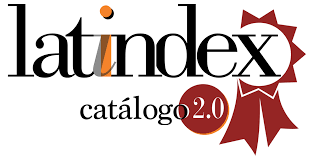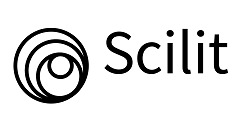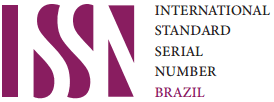Pre-history of psychotherapy in brazil: the animal magnetism in Brazil, 1823-1887
DOI:
https://doi.org/10.25118/2763-9037.2013.v3.365Keywords:
animal magnetism, psychotherapy, history of psychotherapy in BrazilAbstract
The introduction of animal magnetism as claimed by Leopoldo medical practice Gamard in 1832, was frustrated by the member of the Society of Medicine of Rio de Janeiro, Renato Augusto Cuissart, following the same logic that accusatory Mesmer suffered in Paris. Despite this rejection, the Society of Medicine - National Academy of Medicine today - failed to curb the entry of this controversial method in Brazil, and the practice of magnetism between us was actually used until the arrival of the big news of the suggestive therapy or hypnotism.
Downloads
Metrics
References
• 1. Patee, F. A. Mesmer and Animal Magnetism. Nova York: Edmonston Pub, 1994.
• 2. Egas Moniz. O Abade Faria na história do hipnotismo, Lisboa: Ed. Veja, 1977.
• 3. Mesmer, F.A. Le Maqnétisme Animal (Obras de Mesmer reunidas por M. Amadou, com comentários de F.A. Pattie e S. Vinchim) Ed. Payot, Paris, 1971.
• 4. Chastenet, A.M.J. (Marques de Puységur). Memoires pour Servir à l’Histoire et à l’Establissement au Magnetisme Animal, Paris, 1784.
• 5. Deleuze, J.P.F. Histoire Critique du Magnetisme Animal, Chez Belin-Leprieur, 2a Edition, 1819.
• 6. Petètin, J.H.D. Memoire sur la Découverte des Phenomênes que Presentent la Catalépsie et le Sonnambulisme, Paris, 1787.
• 7. Bernheim, H.M. De La Suggestion et ses Applications en Thérapeutique. Albin Michel Ed., Paris, 1888. DOI: https://doi.org/10.2307/1411037
• 8. Breuer, J. & Freud, S. On the Psychical Mechanism of Hysterical Phenomena: Preliminary Communicxation (1893). In: Studies On Hysteria, The Pelican Freud Lib., New York: Penguin Books, 1974; 3: 53-63
• 9. Crabtree, A. From Mesmer to Freud: Magnetic Sleep and the Roots of Psychological Healing. Yale Univ. Press, New Haven, 1993.
• 10. Janet, P. La Medicine Psycholoqique. Flammarion, Paris, 1923.
• 11. Ellenberger, Henri F. The Discovery of the Unconscious: The History and Evolution of Dynamic Psychiatry. New York: Basic Books, 1970, cap. 2.
• 12. Moll, A. Hypnotism. New York: The Walter Scott Pub., 1902, pp. 8-9.
• 13. Fajardo, F. Tratado de Hypnotismo. Rio de Janeiro: Typ. Laemmert & C., 1896.
• 14. Cuissart, AR. Parecer critico sobre a memória de M. Gamard sobre o magnetismo animal, Semanário de Saúde Pública da Sociedade de Medicina do Rio de Janeiro, 1832; 126: 441-8.
• 15. Câmara, FP. Introdução da psicoterapia na medicina brasileira: 1887-1889, Rev. Debates Psiquiatria, 2012.
• 16. Monteiro, ARC. A propósito do relatório de Cuissart sobre a memória de Gamard, Rev. Bras. de Hipnologia, 1980; 1: 47-55.
• 17. Monteiro, ARC. A história da hipnose no Brasil, Rev. Bras. de Hipnologia, 1984; 5: 4-22.
• 18. Darnton, R. O Lado Oculto da Revolução. Mesmer e o Final do Mesmerismo na França. São Paulo: Ed. Cia das Letras, 1988 (trad.).
Downloads
Published
How to Cite
Conference Proceedings Volume
Section
License

This work is licensed under a Creative Commons Attribution-NonCommercial 4.0 International License.
Debates em Psiquiatria allows the author (s) to keep their copyrights unrestricted. Allows the author (s) to retain their publication rights without restriction. Authors should ensure that the article is an original work without fabrication, fraud or plagiarism; does not infringe any copyright or right of ownership of any third party. Authors should also ensure that each one complies with the authorship requirements as recommended by the ICMJE and understand that if the article or part of it is flawed or fraudulent, each author shares responsibility.
Attribution-NonCommercial 4.0 International (CC BY-NC 4.0) - Debates em Psiquiatria is governed by the licencse CC-By-NC
You are free to:
- Share — copy and redistribute the material in any medium or format
- Adapt — remix, transform, and build upon the material
The licensor cannot revoke these freedoms as long as you follow the license terms. Under the following terms:
- Attribution — You must give appropriate credit, provide a link to the license, and indicate if changes were made. You may do so in any reasonable manner, but not in any way that suggests the licensor endorses you or your use.
- NonCommercial — You may not use the material for commercial purposes.
No additional restrictions — You may not apply legal terms or technological measures that legally restrict others from doing anything the license permits.






























